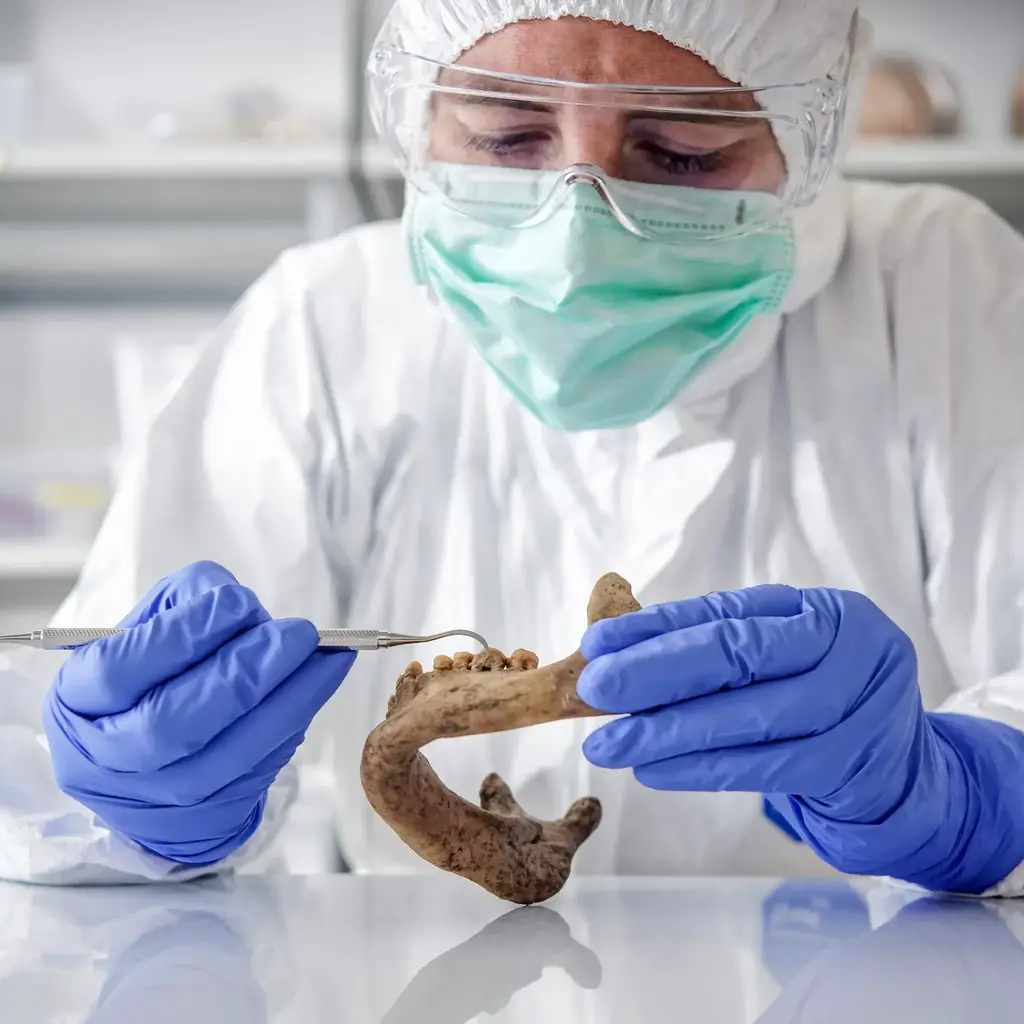Ancient DNA Yields Revived Stone Age Molecules, Say Scientists

Microbes, which are Nature’s most skillful chemists, could reveal new applications for age-old molecules by studying the genomes of ancient bacteria. Werner Siemens Foundation and Felix Wey’s research suggests that highly transdisciplinary studies being conducted by researchers are helping rebuild microbial natural products that are as old as 100,000 years. The dental calculus of humans and Neanderthals is being used for this purpose through the use of ancient genome reconstruction and biotechnology. This research is shedding light on the marvelous molecular secrets revealed by Paleolithic microorganisms. The latest study, which was published in Science, saw the combined effort of researchers from Leibniz Institute for Natural Product Research and Infection Biology, Max Planck Institute for Evolutionary Anthropology, and Harvard University. The teams reconstructed bacterial genomes of bacteria that were previously unknown, dating back to the Pleistocene. With the genetic blueprints obtained, the researchers built biotechnology platforms to revive natural products from ancient bacteria.
Microbes have created a large number of the world’s antibiotics and drugs, and it is not straightforward to produce these complicated chemical natural products since bacteria rely on specialized kinds of genes that encode enzymatic machinery capable of making such chemicals. The scientific study of microbial natural products has been limited to living bacteria so far, but given that bacteria have inhabited the earth for over 3 billion years, an enormous diversity of past natural products with therapeutic potential remains unknown. The aim of this study is to reveal the past genetic and chemical diversity of microbial nature and chart a path for the discovery of ancient natural products and their potential future applications.
Christina Warinner, Associate Professor of Anthropology at Harvard University, Group Leader at the Max Planck Institute for Evolutionary Anthropology, and Affiliate Group Leader at the Leibniz Institute of Natural Product Research and Infection Biology (Leibniz-HKI), says, “In this study, we have reached a major milestone in revealing the vast genetic and chemical diversity of our microbial past…Our aim is to chart a path for the discovery of ancient natural products and to inform their potential future applications.” Pierre Stallforth, Professor of Bioorganic Chemistry and Paleobiotechnology at Friedrich Schiller University Jena and Head of the Department of Paleobiotechnology at the Leibniz-HKI, adds.
When an organism dies, its DNA rapidly degrades and fragments into a multitude of tiny pieces. For years, microbial archaeologists have struggled because most ancient DNA cannot be matched to anything known. Recent advances in computing are now making it possible to rearrange these DNA fragments much like jigsaw puzzles, reconstructing unknown genes and genomes. The challenge is considerable, given that ancient DNA from the Pleistocene era is highly degraded and consists of extremely short strands. The evaluation and reconstruction of damaged DNA is a significant bioinformatics challenge.
The researchers focused their efforts on dental calculus, or tooth tartar, to reconstruct bacterial genomes from 12 Neanderthals dating back to around 102,000 to 40,000 years ago, 34 archaeological humans dating to about 30,000 to 150 years ago, and 18 present-day humans. Tooth tartar is the only part of the body that fossilizes during a person's lifetime, turning living dental plaque into a graveyard of mineralized bacteria. The team has reconstructed numerous oral bacterial species, as well as exotic species with previously undescribed genomes.
Among these was an unknown member of Chlorobium, whose highly damaged DNA showed the hallmarks of advanced age, and which was found in the dental calculus of seven Paleolithic humans and Neanderthals. All seven Chlorobium genomes were found to contain a biosynthetic gene cluster of unknown function. “The dental calculus of the 19,000-year-old Red Lady of El Mirón, Spain yielded a particularly well-preserved Chlorobium genome,” says Anan Ibrahim, postdoctoral researcher at the Leibniz Institute of Natural Product Research and Infection Biology and co-lead author of the study. “Having discovered these enigmatic ancient genes, we wanted to take them to the lab to find out what they make”.
The team used the tools of synthetic molecular biotechnology to allow living bacteria to produce the chemicals encoded by the ancient genes. This was the first time this approach had been successfully applied to ancient bacteria, and it resulted in the discovery of a new family of microbial natural products that the researchers named “paleofurans.” “This is the first step towards accessing the hidden chemical diversity of earth’s past microbes, and it adds an exciting new time dimension to natural product discovery,” says Martin Klapper, postdoctoral researcher at the Leibniz Institute of Natural Product Research and Infection Biology and co-lead author of the study.
Collaboration between the fields of paleogenomics and chemistry is ushering in a new field of study: paleobiotechnology. Credit: Werner Siemens Foundation, Felix Wey
The success of the study is the direct outcome of an ambitious collaboration between archeologists, bioinformaticians, molecular biologists, and chemists to overcome technological and disciplinary barriers and break new scientific ground. “With funding from the Werner Siemens Foundation, we set out to build bridges between the humanities and natural sciences,” says Pierre Stallforth. “By working collaboratively, we were able to develop the technologies needed to recreate molecules produced a hundred thousand years ago ,” says Christina Warinner. Looking towards the future, the team hopes to use the technique to find new antibiotics.




